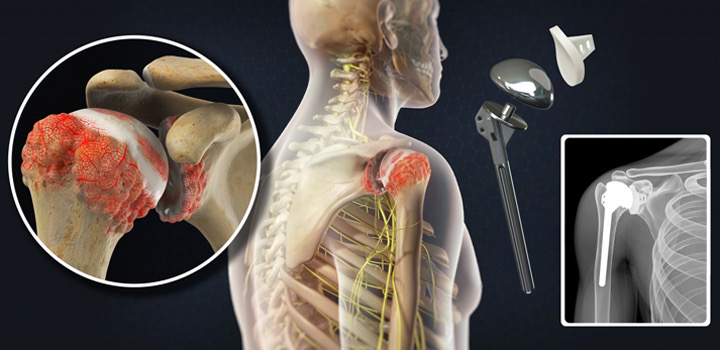Imaging is useful in assessing shoulder injuries. An X-ray will often be indicated to confirm if a shoulder fracture has occurred. Also on the X-ray, you can evaluate the correct alignment of the shoulder-scapular and shoulder-clavicular joints. The X-ray image shows a decrease in the joint space between the head of the humerus and the tooth, as well as the presence of osteophytes characteristic of osteoarthritis of the shoulder joint.
Nuclear magnetic resonance (NMR) provides information about the soft parts of the shoulder, in contrast to radiography showing only bones. MRI will provide high-resolution images of tendons, cartilage and ligaments of the shoulder, as well as bones. MRI will detect tears of rotators, vertebrae or biceps tears.

What are the main diseases of the shoulders?
The most common causes of shoulder pain are:
- Subbar syndrome, calcaneal inflammation and rotator cuff tendonitis: these conditions are usually the result of repetitive overhead arm activities that cause inflammation in the rotator cuff tendons and in the calcaneal tendon that covers these tendons.
Rotator cuff rupture: both shoulder injuries and wear and tear over time can cause these tendons to rupture. Tendons can break completely when they are completely detached from the bone attachment, or partially when part of the torn tendon remains attached to the bone. - Shoulder instability: this condition usually occurs as a result of an acute injury. In a shoulder dislocation, the head of the humerus is suddenly displaced and leaves the joint, which leads to rupture of the ligaments stabilizing the shoulder joint. In a shoulder lift, the head of the humerus does not completely leave the joint, but only partially, and the ligaments are usually stretched and not completely torn. Both states can remain in one episode without relapse. But there are also situations in which patients may suffer from chronic instability of the shoulder. Episodes of instability affect sports activity, but also the routine activities of patients. Chronic instability of the shoulder can also lead to premature wear of the joints.
